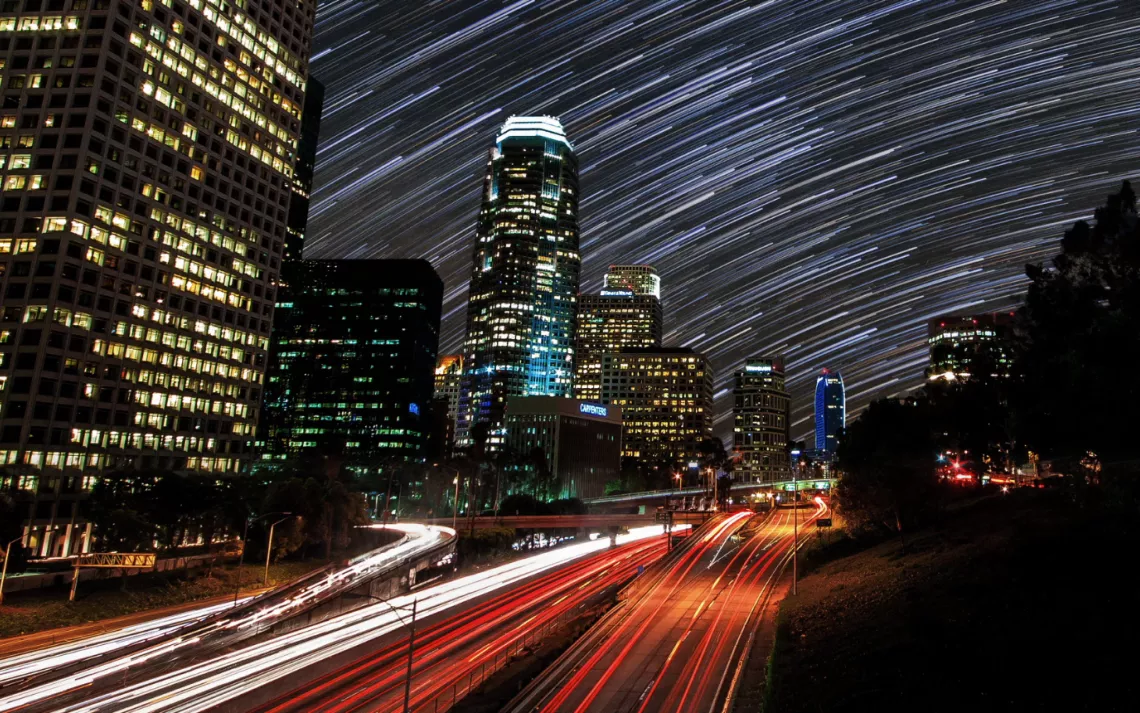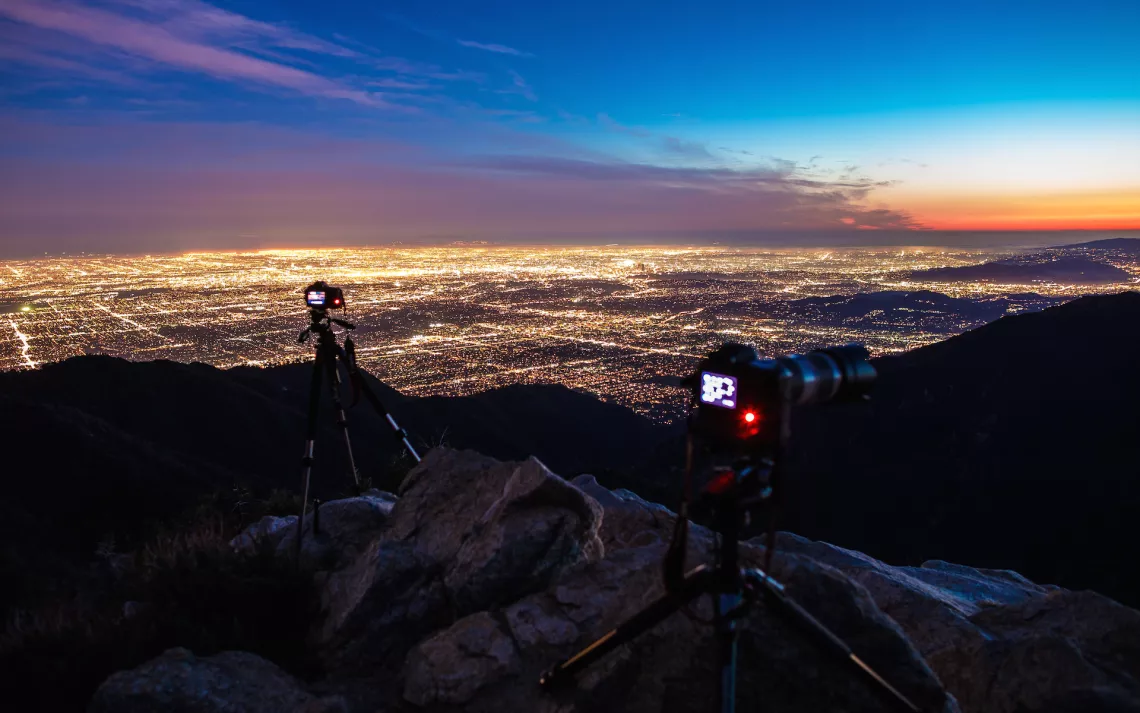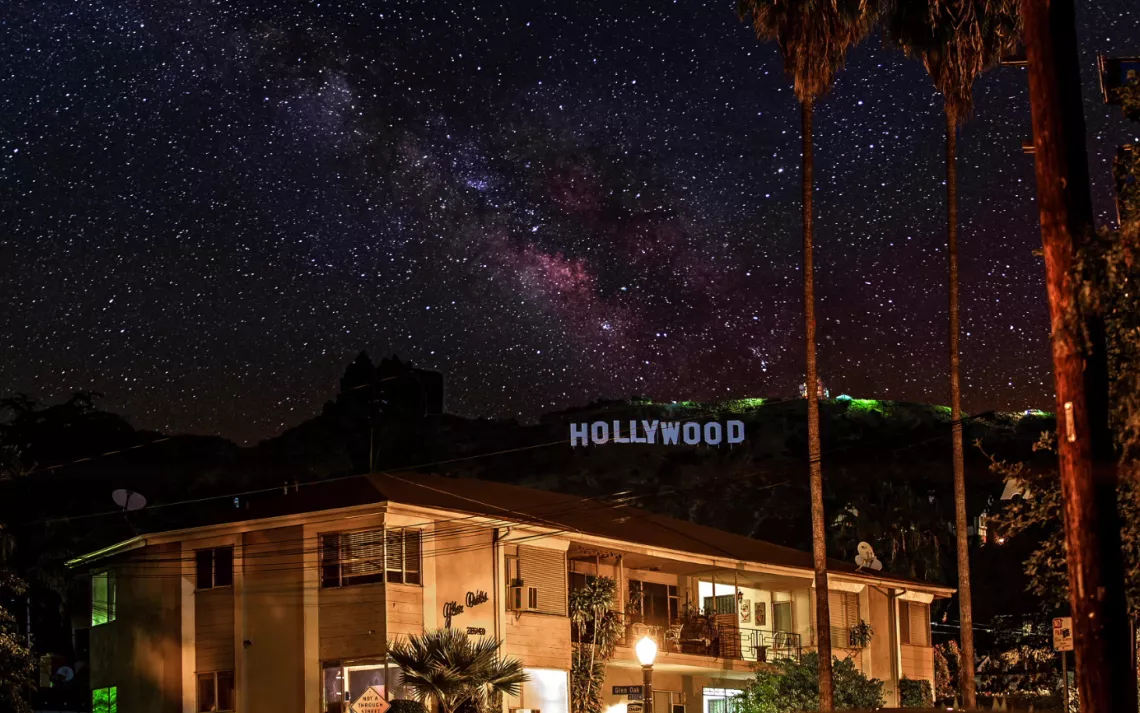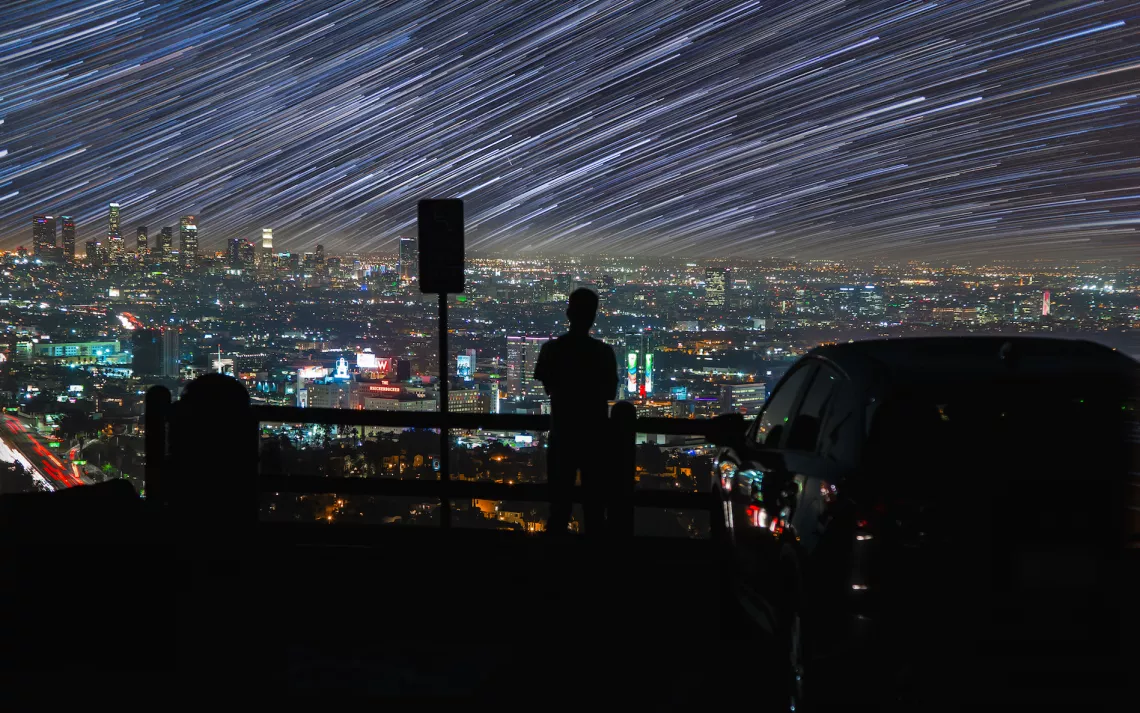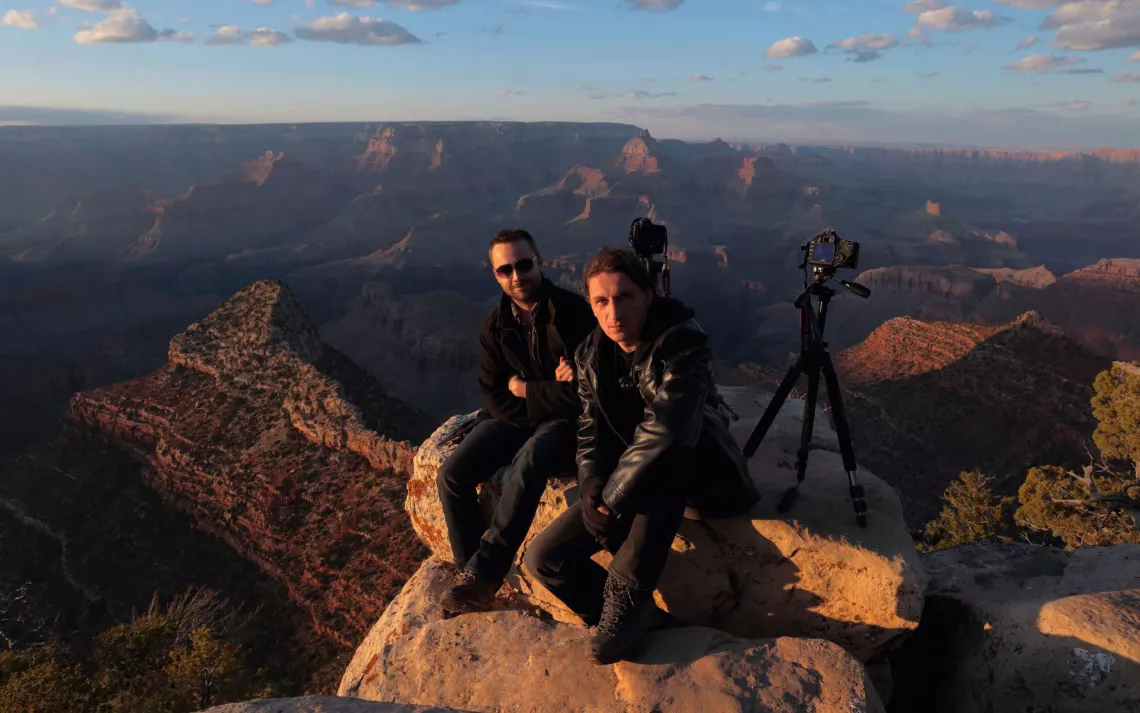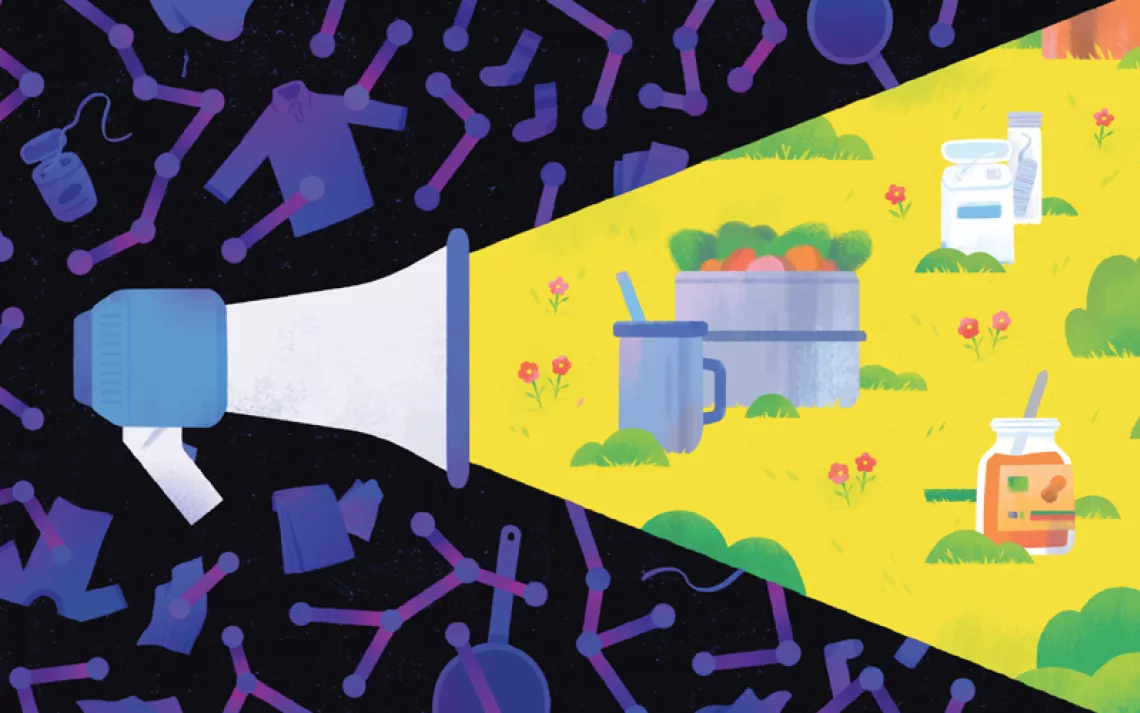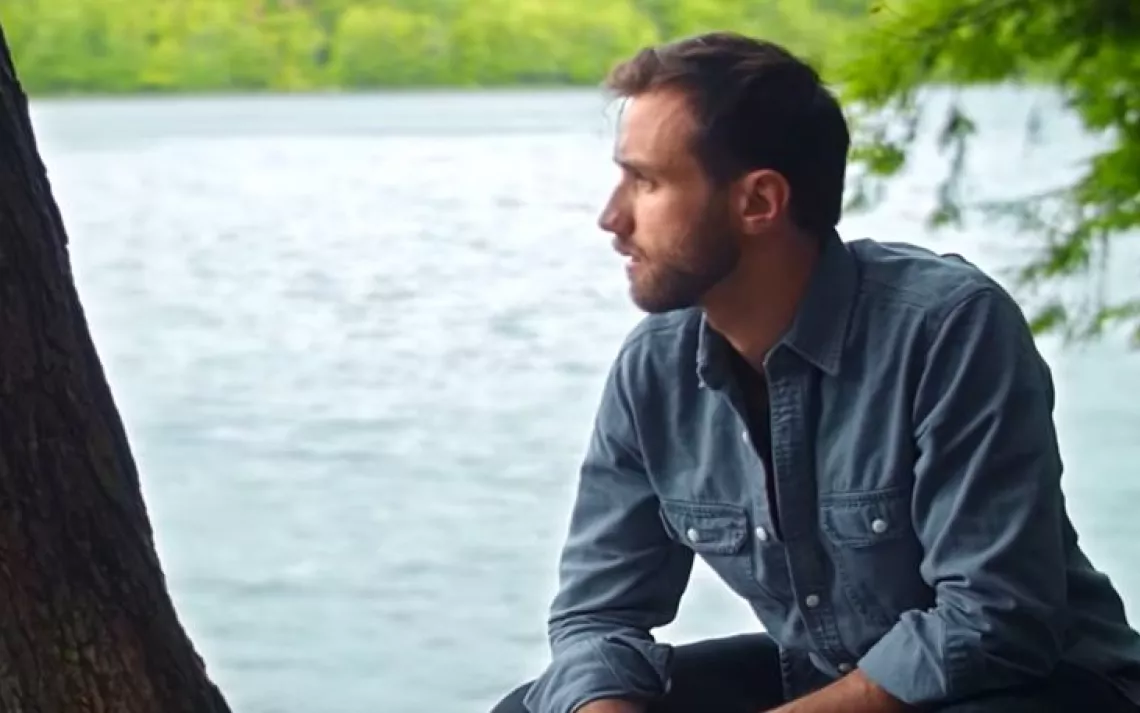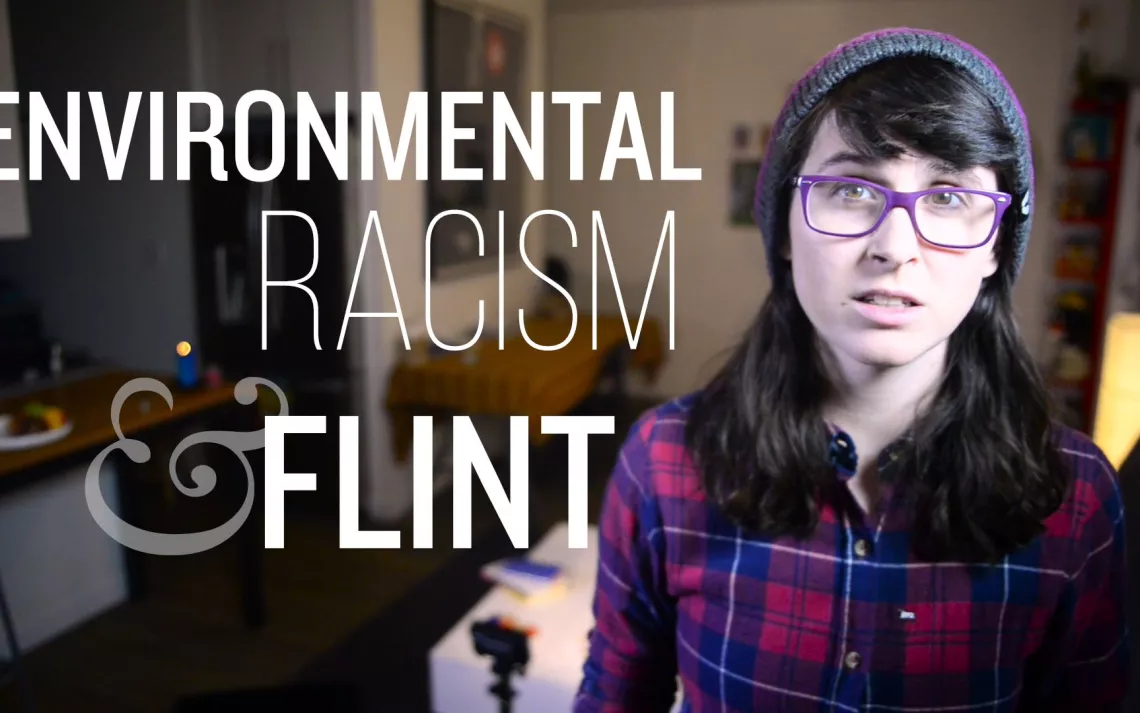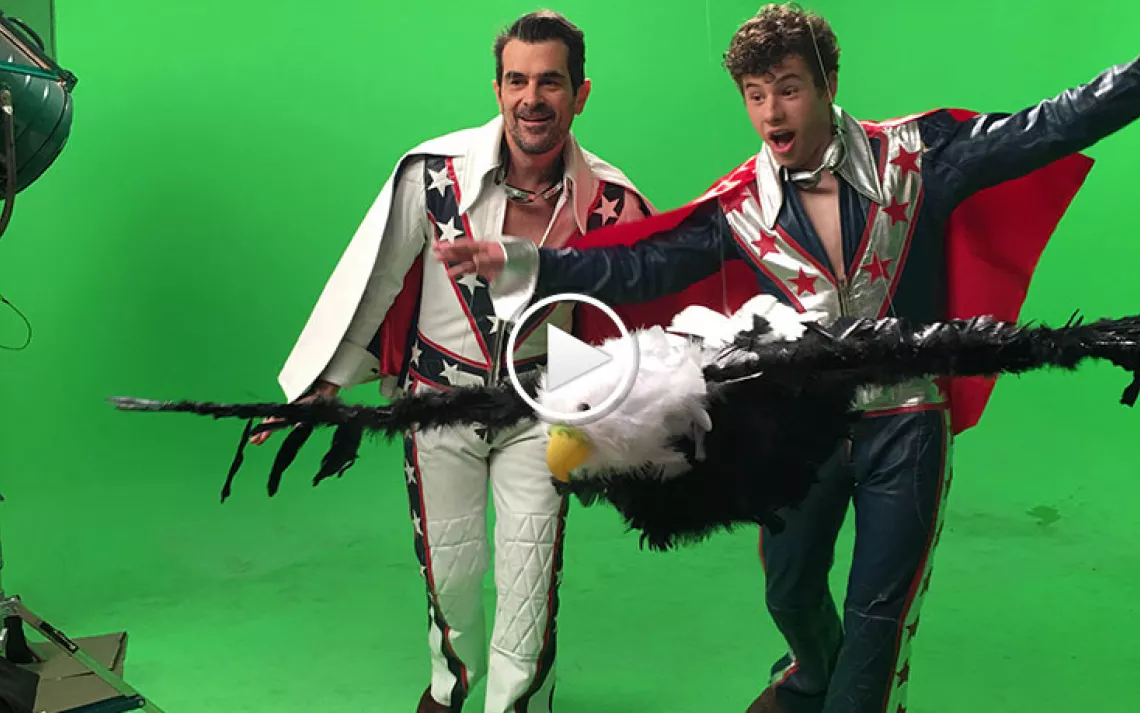The New Starry Night
Filmmakers capture kaleidoscope skies before they disappear.
Every night, a psychedelic laser-dome studded with constellations and streaked in neon star trails stretches above us. At least that’s what filmmakers Gavin Heffernan and Harun Mehmedinovic see from their cliff-top perches.
Heffernan and Mehmedinovic, who met while attending film school in Los Angeles, have been camping out nightly, collecting time-lapse shots of the night sky in various locations for the last year and a half. Now, they are capturing the last remaining dark skies in America for their new project, Skyglow. The coffee-table book and time-lapse videos funded by their Kickstarter campaign will allow them to expand their project farther afield and show us the scenes we are missing in the skies—what they have already captured is almost unbelievable.
“People keep asking: Did you animate those images?” Mehmedinovic says. Because of light pollution, many city-dwellers have never even seen the Milky Way. “It’s science fiction for a lot of people,” Heffernan adds.
A ten-second clip takes about two to three hours to capture, plus hours of looking at and editing footage. What the duo occasionally misses on coffee breaks around a campfire, the camera always catches: meteors and flares that they spot on film during review. “It is one of the few remaining art forms that you get to enjoy the next day—it’s like unwrapping a present,” Heffernan says.
The two plan to trek cross-country Breaking Bad-style in their RV, stopping in Arizona, Utah, Glacier National Park, and Yosemite on their way to Alaska. Endorsed by the International Dark Sky Association, the project aims to raise awareness about light pollution, one of the most preventable forms of ecological degradation.
Light that leaks from towns outshines the stars, interfering with astronomical research and interrupting the rhythms of nocturnal animals. “It sort of looks like a giant nuclear bomb going off,” says Heffernan. Mehmedinovic and Heffernan also believe light pollution has profound psychological effects. While at the American Film Institute, Mehmedinovic saw how life changing the pure night sky can be while leading star-gazing outings that allowed him to escape the noise and nervous energy of LA. His tagalongs—friends and fellow students including Heffernan—would stagger out the car when they saw the night sky, stupefied for nearly 15 minutes by the net of stars they never knew hung above them.
“We are just a tiny little place; you are just a tiny little person,” Mehmedinovic says. “There’s nothing that invokes the imagination like the sky does.”
Follow Sierra on Facebook, Twitter, Pinterest, Instagram, and YouTube.
 The Magazine of The Sierra Club
The Magazine of The Sierra Club
